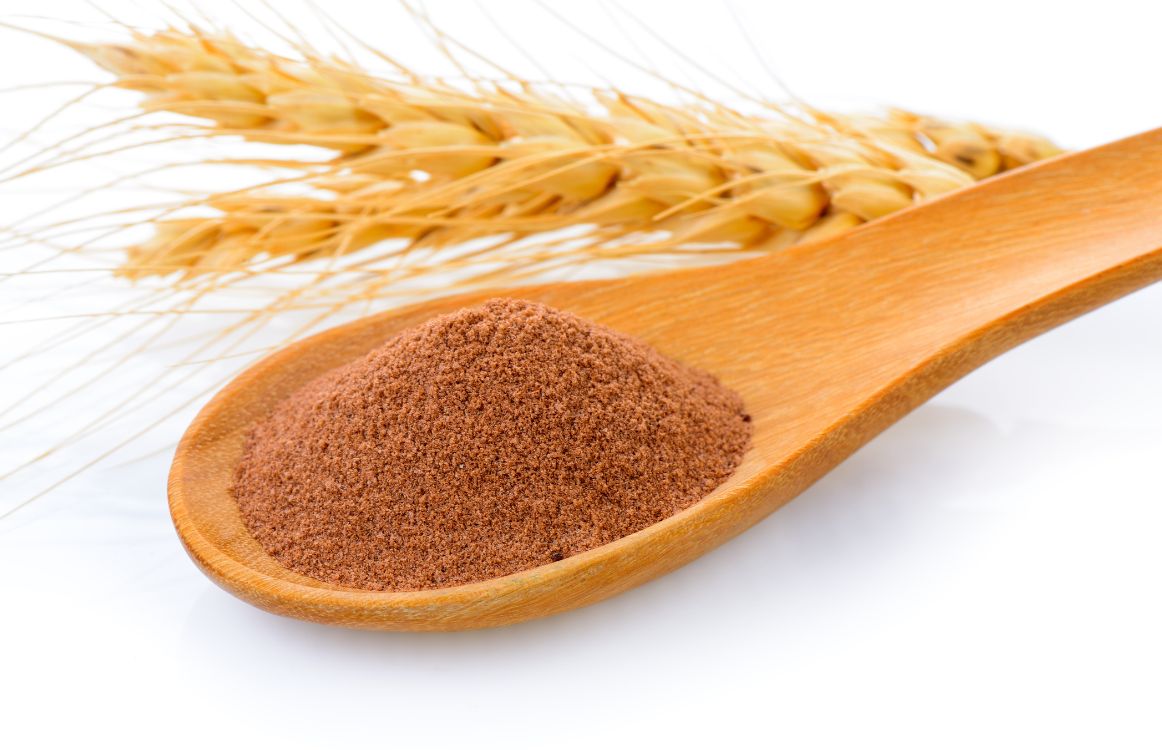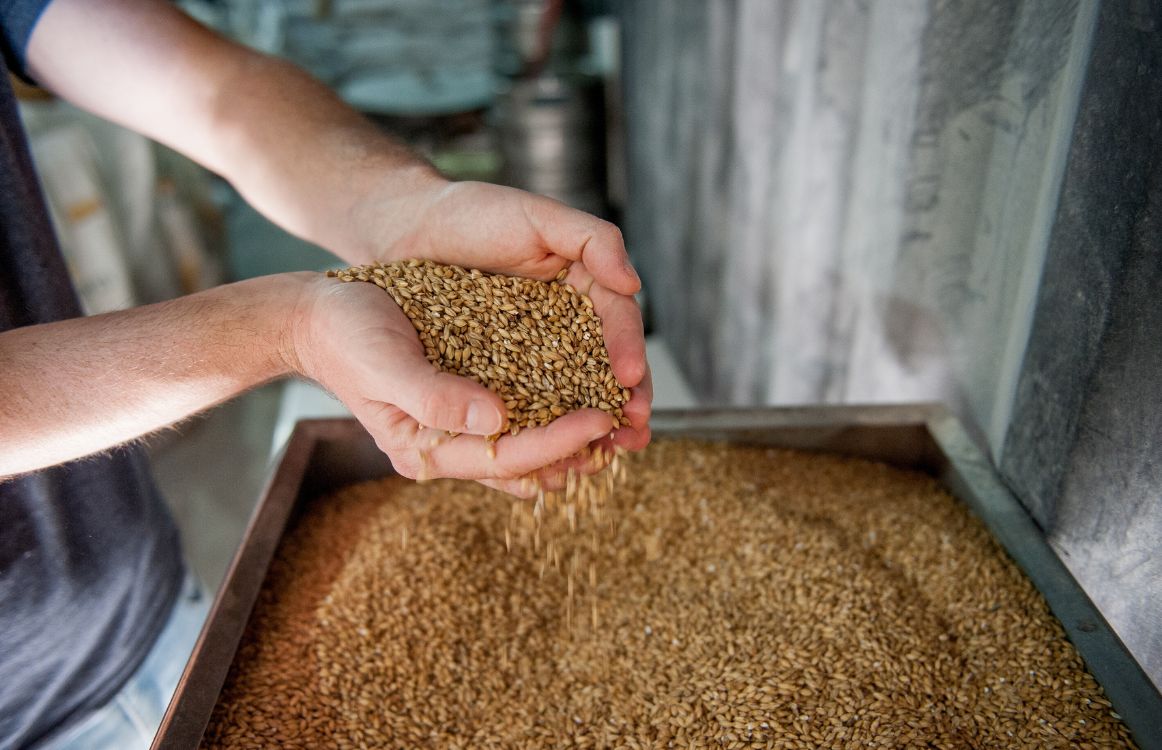What Is Malt Powder Made of

If you’ve been hearing about malt powder, it is one of those secret ingredients in baking and food prep that was not so secret 100 years ago, but slowly left the public eye. Now, more and more people are interested in introducing it to their kitchens, so it’s worth understanding. You may be whipping up batches of cookies or breads with malt powder in no time.
Or you may be a brewer not sure about how to best use this ingredient. We’ve got you covered.
What Is Malt?
First, let’s discuss the term “malt.” What is it and what do we do with it?
To malt a grain means to germinate it. Germination is essentially sprouting the grain in advance of its natural process.
To malt a grain, it is soaked in water until it begins to sprout and then it is dried out.
Why do we do this?
Well, grains are packed with sugars called disaccharides, meaning complex chain sugars, known as maltose, that have more than one sugar molecule. The complex sugars are harder for other organisms, like yeast and the human body, to break down, and they also present as less sweet.
When grains are germinated, however, an enzyme inside the grain called maltase, is unlocked and activated. Maltase jumps into action during the malting process and breaks the complex sugars down into simple sugars, making them sweeter and easier for living organisms to break down.
What Is Malt Powder Made From?
In almost all cases, malt powder is made from barley.
Barley has long been the most reliable grain for malting as it is a hardy crop that grows well under most conditions and can be used for myriad purposes.
Thus, when we talk about malt, we are typically talking about barley.
Malt powder is the result of those malted grains, as described above, being ground up to a fine powder that can then be added to bread dough, cookies, and even drinks to create a roasted, nutty, and even chocolatey flavor.
Diastatic malt powder is the powder made with the previously discussed active enzyme, maltase, which means that enzyme will also unlock the sugars in whatever you add the powder to, making it sweeter.
So, for example, a malted milkshake with diastatic malt powder will be a bit sweeter, thicker, and richer than without the powder.
Non-diastatic malt powder still has malted grains, but those grains have been heated to deactivate the enzyme.
The only real difference between the two is that the diastatic malt powder will make bread and other baked goods rise more quickly than they usually would, and you can probably save some of your yeast.
If you are only looking for flavor and color, you can use non-diastatic malt powder.
What Is Chocolate Malt Powder or Malted Milk?
Now, confusion often enters this discussion when a discussion of chocolate malt powder or malted milk comes up. Many people think these are the same product.
To clear up the confusion: malt powder is just malted grains ground to a fine powder. That’s it.
Malted milk, also often referred to as malt powder, is a combination of malt powder (the ground malted grains), flour, and condensed milk. Malted milk is used to make milkshakes and other fun sweets.
Chocolate malt powder is just malted milk with chocolate added.
The best example of malted milk or chocolate malt powder today is Ovaltine.
However, it is also important to note that malt powder, whether alone or mixed into a milk, does have nutritional value.
Malted barley is rich in Vitamins D, A, C, K, E, and all the B vitamins. For this reason, it has long been added to foods and beverages and touted as nutritious.
Ovaltine was developed in 1904 by a chemist who was investigating the nutritional value of barley malt.
For this same reason, many people still today will add brewer’s yeast to their popcorn and other foods. Brewer’s yeast is the discarded yeast product from fermenting beer.
Little do many people still know today how nutritious the ingredients in beer — yeast and barley malt — actually are.
And even better, a little goes a long way. You can replace 1 teaspoon of sugar in your cookies or breads with ½ teaspoon of malt powder and pack a sweet and wholesome punch.

Malt powder for beer brewing
Malt powder is commonly used by brewers in various ways during the beer-making process.
First off, malt powder is often used to make malt extract, which is a concentrated syrup or powder derived from malted barley. This extract can be used as a source of fermentable sugars in beer recipes, particularly for homebrewers or those looking for a convenient alternative to using whole grains.
Brewers may also use malt powder as an adjunct, along with other grains, to enhance the flavor, color, and mouthfeel of the beer.
It can be added to the mash or boil to contribute fermentable sugars and increase the overall maltiness of the brew.
Malt powder actually can and is being used to make adjustments to beer recipes. For example, if a brewer finds that the original wort lacks certain characteristics, they may add malt powder during the brewing process to achieve the desired flavor profile.
Brewers might use malt powder to boost the gravity of their beer, especially if they are aiming for a higher alcohol content. The fermentable sugars in the malt powder provide additional food for the yeast, resulting in a higher alcohol content.
Last but not least, in some cases, malt powder can be used to create a starter culture for yeast. This involves creating a small batch of fermentable wort using malt powder and allowing yeast to multiply before pitching it into the main batch of beer.
So many uses, so little time!
Cheers!
Are you still pitching fresh yeast every time? By reusing your yeast, you can save up to hundreds of thousands of dollars per year on just yeast alone!
Join the hundreds of brewers from all around the world using the Smartest Automated Yeast Cell Counter! Request a Free Demo Account today and experience firsthand how Oculyze can take your brewery to the next level!


